This site contains affiliate links. I may earn a small commission, at no extra cost to you.
The entryway is more than a pass-through space, it sets the emotional tone for your entire home. Whether you live in a spacious house or a compact apartment, creating a cozy, intentional entryway makes you feel instantly more grounded when you walk in the door. Here’s how to make your entrance more inviting, starting with the small things that have big impact.
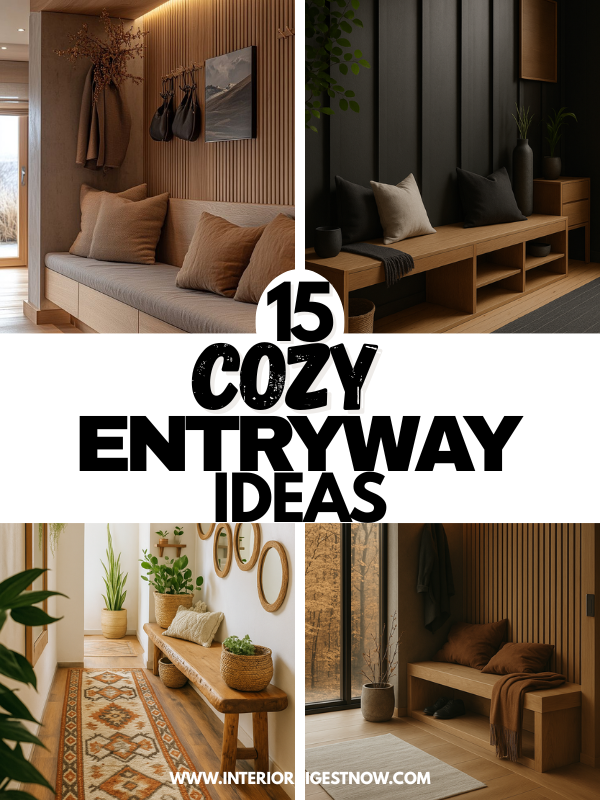
1. Add a Warm Wood Bench
A warm, solid wood bench is one of the most functional and beautiful entryway investments you can make. It serves as a place to sit while taking off shoes, drop a bag when you walk in, or simply add structure to the space. Choose natural finishes like oak, walnut, or ash lighter woods create a Scandinavian softness, while darker tones offer a cozy, cabin-like appeal.
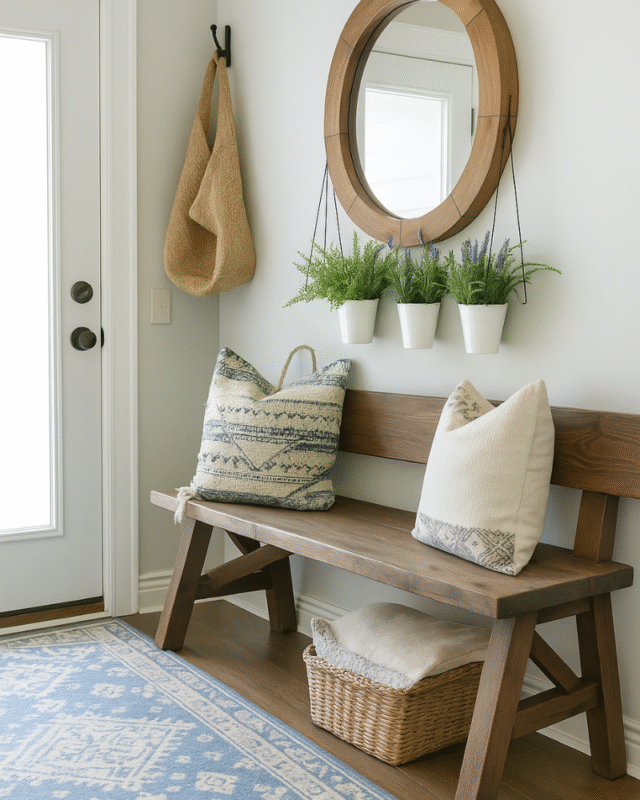
The style of the bench can dramatically shift the tone of your entryway. Opt for clean lines if you’re going for a modern minimalist look, or add subtle carving details for something a bit more rustic. For even more coziness, consider built-in storage underneath, this not only keeps the area tidy but also makes your entryway feel curated and intentional.
And don’t forget that placement matters. If your space is narrow, a slim profile bench is ideal; if it’s wider, choose a longer bench to fill the area proportionally. A thoughtfully chosen bench becomes the visual anchor of your entryway, grounding the rest of your decor choices.
2. Layer Up with Soft Textiles
Adding textiles like a throw blanket or a faux sheepskin instantly makes your entryway feel more comfortable and lived-in. These small, tactile touches bring warmth and texture to what might otherwise be a very hard-surfaced space. Just like you’d layer blankets on a bed or sofa, consider your bench or console an opportunity to introduce softness and depth.
When choosing materials, go for cozy options like wool, cotton blends, or bouclé. Stick to neutral tones—like cream, greige, charcoal, or olive green to keep the vibe calm and versatile. Even just a casually draped throw or a small layered rug can make a cold space feel like a cozy nook.
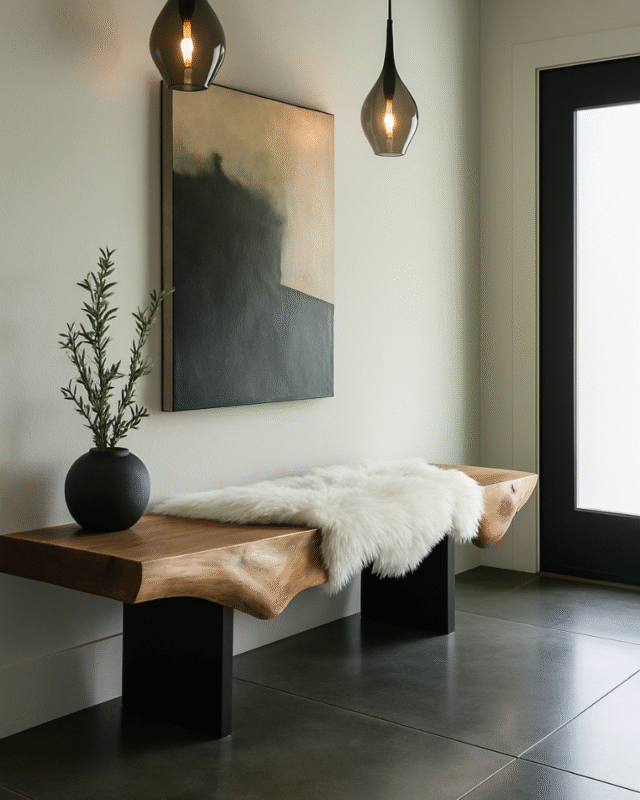
Textiles also work seasonally. In winter, add heavier fabrics with rich tones; in warmer months, go for light linens in airy hues. This kind of rotation keeps the entryway feeling fresh without a full redesign. And best of all, these layers are easy to clean, switch, or refresh when needed.
3. Use a Rug That Feels Good Underfoot
A rug in the entryway does more than protect your floors, it defines the space and instantly makes it more welcoming. Especially if you have hardwood or tile floors, the right rug adds warmth, softness, and even a bit of sound absorption. For a cozy vibe, opt for natural fibers like wool, cotton, or jute with a low pile or flat weave that won’t catch debris easily.
The shape and size of the rug matter just as much as the material. A runner is great for narrow hallways, while a rectangular or oval rug works beautifully in a wider vestibule. Make sure the rug isn’t too small, it should feel like it belongs to the space and ideally anchor your bench or storage unit. Stick to earthy colors, subtle patterns, or tone-on-tone textures to keep things understated but stylish.
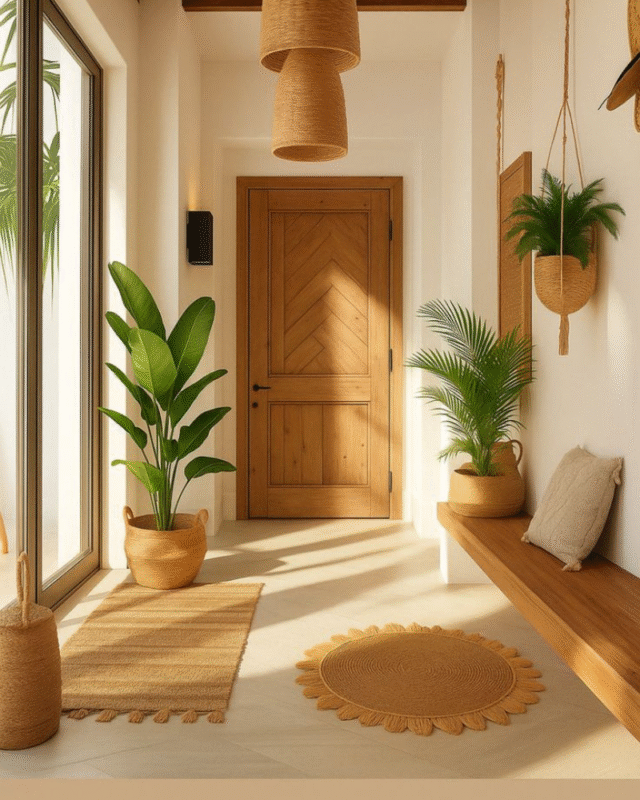
Want to go a step further? Layer your entry rug over a slightly larger neutral base rug for a designer look. And don’t skimp on a quality rug pad, this keeps your rug from slipping and adds extra cushioning underfoot, giving guests (and you!) a gentle, welcoming step into your home.
4. Mix and Match Cushions
Throw pillows aren’t just for living rooms, they can turn a basic bench into an inviting seat you’ll actually want to use. Mixing and matching cushions adds comfort and style without taking up too much space. Look for subtle variations in texture and size to give a layered, intentional feel.
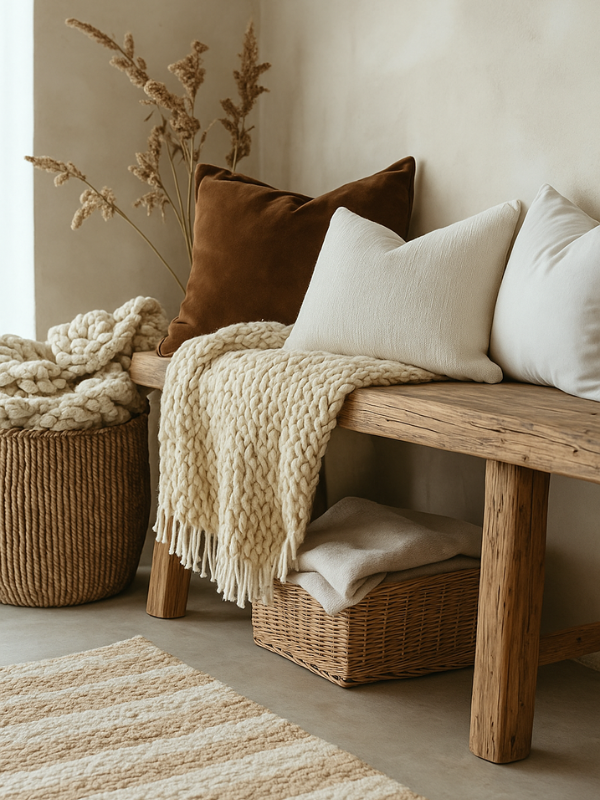
Stick to a cohesive color palette to avoid visual clutter. For a cozy effect, use warm, muted shades like oatmeal, rust, soft black, or dusty olive. Mixing materials like linen, velvet, and wool adds tactile interest that instantly makes the area feel more designed.
You can also play with pillow shapes. Square is standard, but lumbar or bolster pillows add variety and can help support your back if the bench is actually used for seating. Don’t overdo it, two or three thoughtfully chosen pillows are usually plenty for an entryway.
5. Incorporate a Statement Wall Color
One bold wall color can completely transform your entryway, giving it a sense of drama and warmth. Deep hues like charcoal, navy, or sage green make the space feel cozy and grounded, while still providing a stylish first impression.
If you’re not ready for a full wall, consider color-blocking or painting just the lower half of the wall to create dimension. This technique can make the ceiling feel taller or visually separate the bench area from hooks or artwork above.
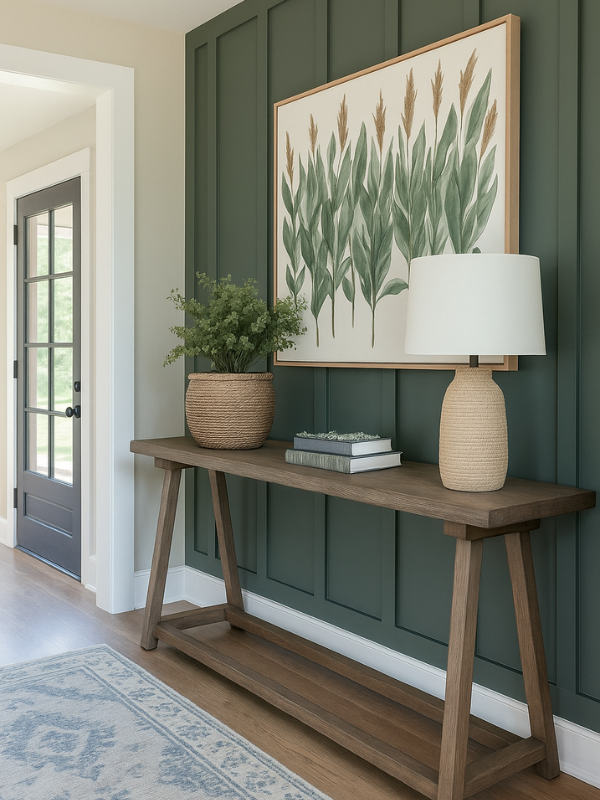
To keep things cohesive, tie the wall color into other design elements like pillows, throws, or artwork. And don’t forget lighting a darker wall will require thoughtful illumination to keep the space from feeling closed-in.
6. Bring in Baskets for Hidden Storage
Few things make an entryway feel more put-together than functional hidden storage and baskets are the easiest way to pull it off. Slide a woven basket or two under your bench or into an open cubby to keep everyday clutter out of sight.
Choose natural materials like rattan, seagrass, or jute for a warm, organic feel that blends beautifully with minimalist and rustic decor alike. Lidded baskets can keep things like shoes, hats, or pet leashes contained and dust-free, while open baskets are great for grab-and-go essentials.
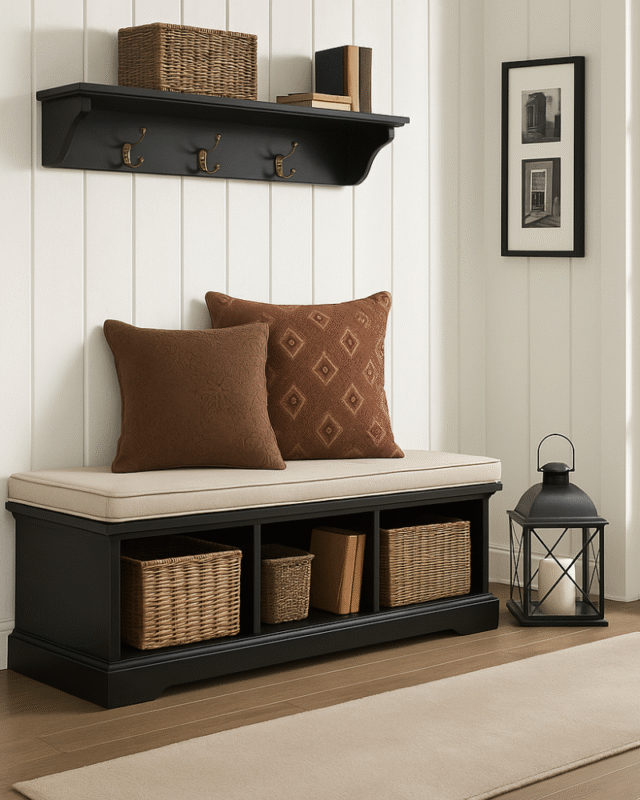
For an added touch of personalization, label your baskets or use small hang tags to identify contents. That little extra step makes them more user-friendly and helps the whole family stay organized.
7. Add a Touch of Greenery
A little greenery goes a long way in softening your entryway and making it feel fresh and lived-in. A potted plant, a small tree, or even a single leafy stem in a vase can inject instant life into the space.
If your entry gets a lot of natural light, try a hardy plant like a snake plant, ZZ plant, or pothos. For low-light areas, faux greenery can still deliver the same calming visual effect without the maintenance. Just make sure the quality is good—realistic texture and coloration make all the difference.
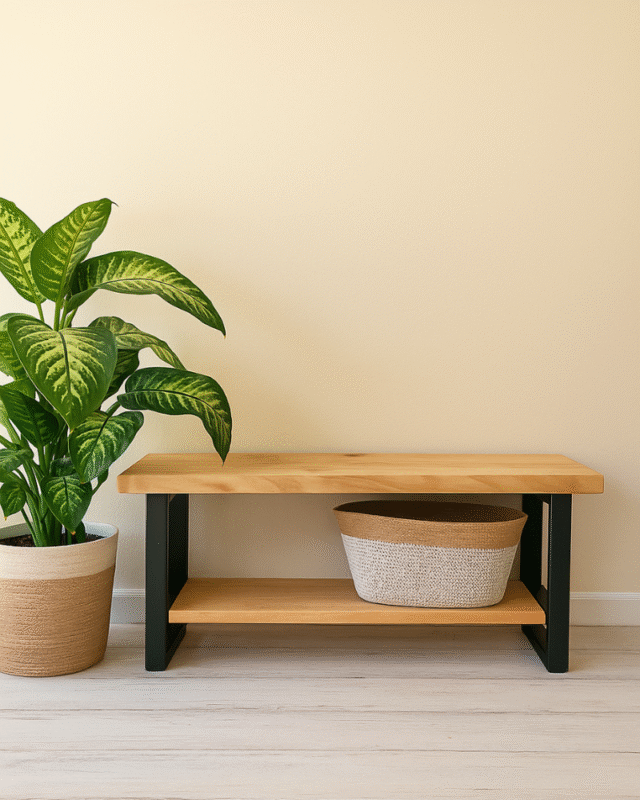
Place greenery in ceramic, concrete, or matte black pots for an understated and stylish presentation. And consider height variation, tall plants can fill vertical space beautifully while small tabletop arrangements add subtle detail.
8. Hang a Large Mirror
A mirror is a classic entryway piece for good reason, it helps reflect light, opens up the space, and lets you sneak a last-minute look before heading out the door. Choose a mirror that suits your overall aesthetic: round for softness, square or arched for a more architectural statement.
Go big if the wall allows. An oversized mirror can serve as an art piece in itself while visually doubling the size of the room. Alternatively, a mirror with a built-in shelf or ledge adds a touch of function.
Framing matters too. Wood adds warmth, black metal adds contrast, and brass gives a subtle luxe feel. Place it opposite a light source to maximize brightness, or use it to reflect a favorite piece of decor for double the style.
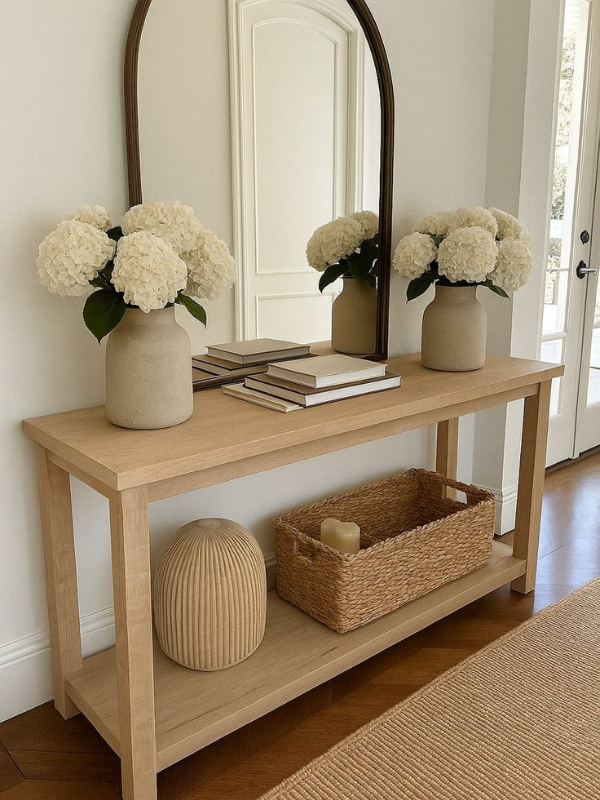
9. Keep the Color Palette Simple
A tight color palette is key to achieving that relaxed, cohesive look. Too many contrasting tones can make a small space feel busy or chaotic, especially in an area meant to welcome and soothe.
Start with 2–3 dominant tones like natural wood, soft gray, and matte black and layer in accents from the same family. This creates flow and makes mixing textures and shapes much easier. For added warmth, work in muted earth tones or seasonal tones like rust or pine green.

This principle works whether your entry is minimal and modern or layered and rustic. A restrained palette also helps emphasize standout pieces like an artful mirror or sculptural vase without visual competition.
10. Choose Soft, Ambient Lighting
Lighting makes or breaks the vibe in your entryway. Bright overheads can feel stark, while warm, diffused lighting sets the perfect cozy mood. Think about layering: a sconce near the door, a table lamp on a console, or even under-bench lighting can all add ambiance.
Choose bulbs with a warm temperature (2700K–3000K) for a golden, relaxing glow. Avoid cool or blue-toned lighting, which can make the space feel sterile or office-like.
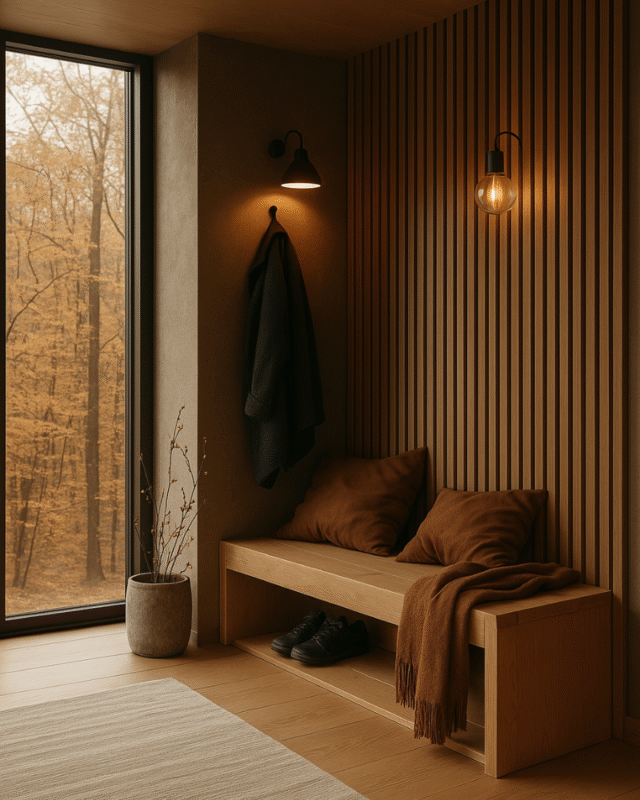
The fixture itself should reflect your style. Matte finishes like black, brass, or ceramic feel sophisticated but understated. If your entry has room for a statement pendant, it can double as decor and lighting in one.
11. Add a Console or Slim Cabinet
If you have a bit more space to play with, a slim console or low-profile cabinet is both functional and beautiful. It gives you a surface to style and some hidden storage to boot, perfect for holding keys, mail, or everyday essentials.
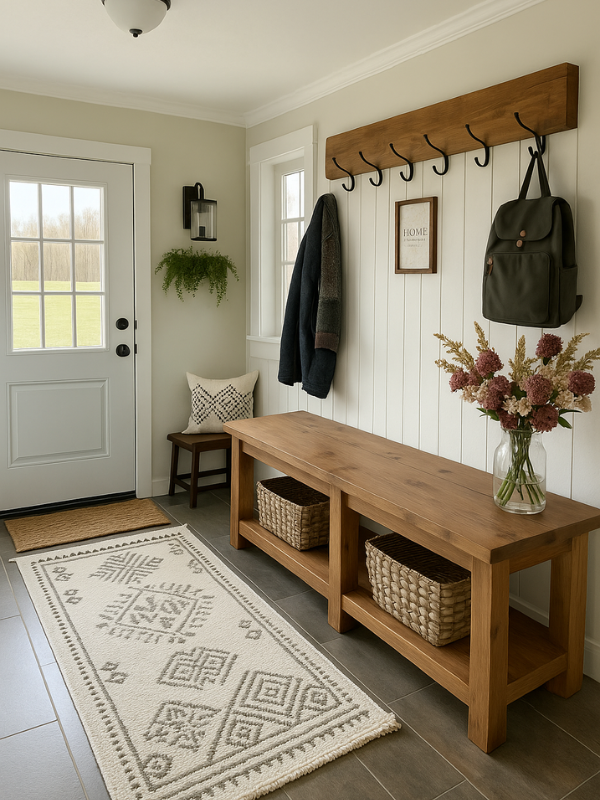
Look for a piece that matches the visual weight of your space. Open-legged designs feel lighter and more modern, while solid-front cabinets add gravitas and offer more storage. Wood tones or black finishes usually blend seamlessly with cozy minimalist decor.
Styling the surface is just as important. Add a small tray for corralling items, a lamp for mood lighting, and one or two decorative elements like a vase or candle. Keep it clean, this isn’t the place to dump everything from your bag.
12. Decorate with Intentional Minimalism
More isn’t always more especially in an entryway. With limited square footage, every item should earn its place. Intentional minimalism is about curating, not stripping away. Choose a few high-impact pieces and let them shine.
This could mean one oversized artwork instead of a gallery wall, or a single ceramic vase instead of a shelf full of trinkets. When each item has breathing room, it feels more important and less like visual clutter.
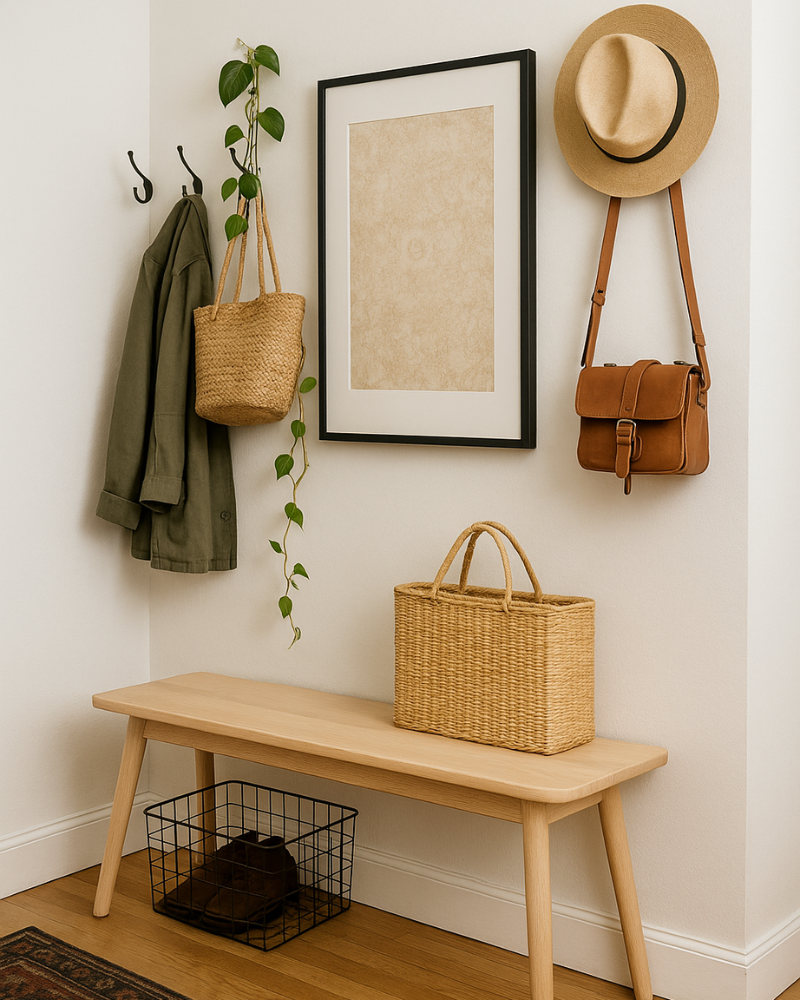
Don’t be afraid of negative space. The open areas between pieces are what give your entryway that calm, considered feel. Think of it like styling a boutique not a storage room.
13. Introduce Natural Materials
Nothing warms up a space quite like raw, natural materials. Wood, wool, jute, leather, rattan, these elements bring an organic, tactile quality that instantly feels cozy and grounded.
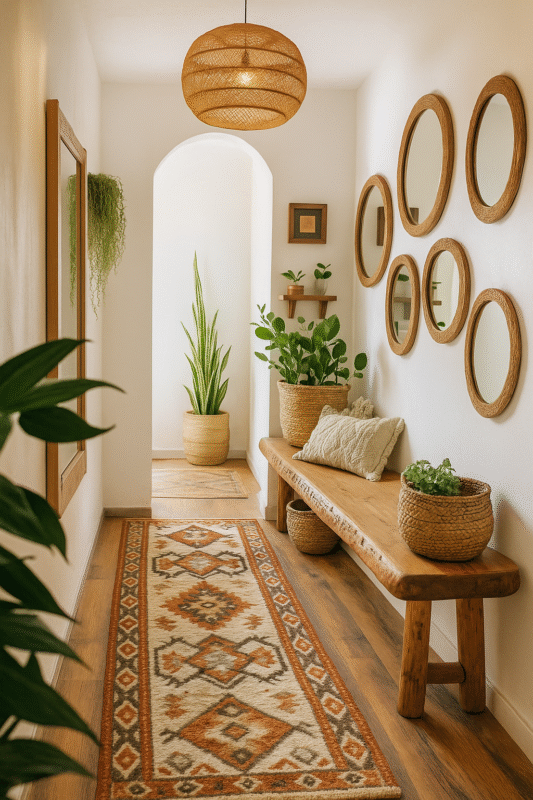
Mix materials for dimension. A wood bench paired with a jute rug, a ceramic planter, and a wool throw has richness without needing color or pattern. These materials also wear beautifully, often gaining character over time.
If you’re trying to keep things neutral but still want depth, this is your secret weapon. Natural textures add interest and warmth even when the color palette is subdued.
14. Use Wall Hooks or Peg Rails
Wall hooks and peg rails are lifesavers in small entryways. They give jackets, hats, and bags a place to live without eating up floor space. Plus, they double as decor if chosen with style in mind.
Go for wooden pegs for a Scandinavian touch, or matte black metal for a modern vibe. You can mount them at different heights to accommodate both adult and kid use, or create symmetry by flanking a mirror or artwork.
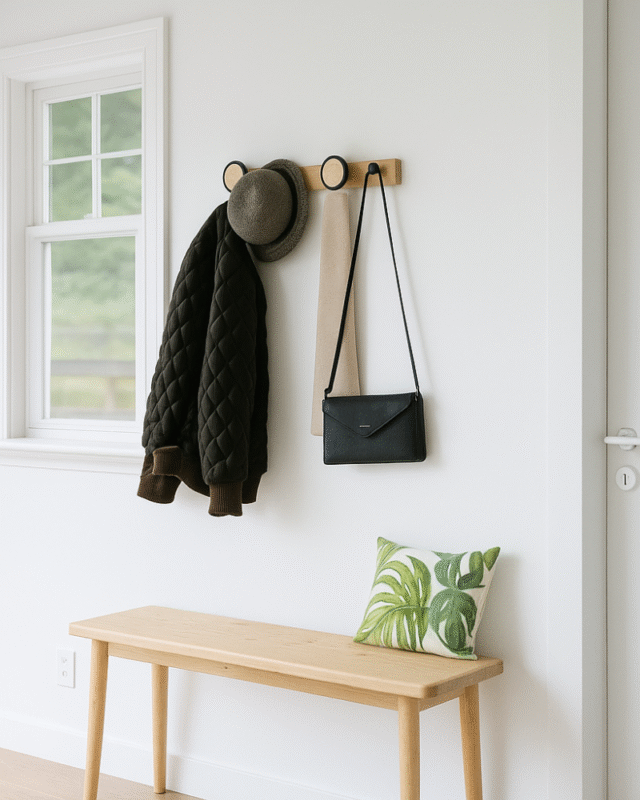
To keep things tidy, don’t overcrowd your hooks. A few well-placed items like a canvas tote, a cozy scarf, or a structured coat—can look intentional rather than cluttered.
15. Keep It Clean and Clutter-Free
The most effective cozy spaces are the ones that feel open, calm, and uncluttered. No matter how beautiful your bench or lighting is, it won’t shine if it’s surrounded by mess. Keep the floors clear, the surfaces clean, and the storage systems functional.
Do regular resets weekly if you can. Tuck away stray shoes, recycle junk mail, and take a minute to restyle your surfaces. These tiny habits keep your entryway from becoming a drop zone.
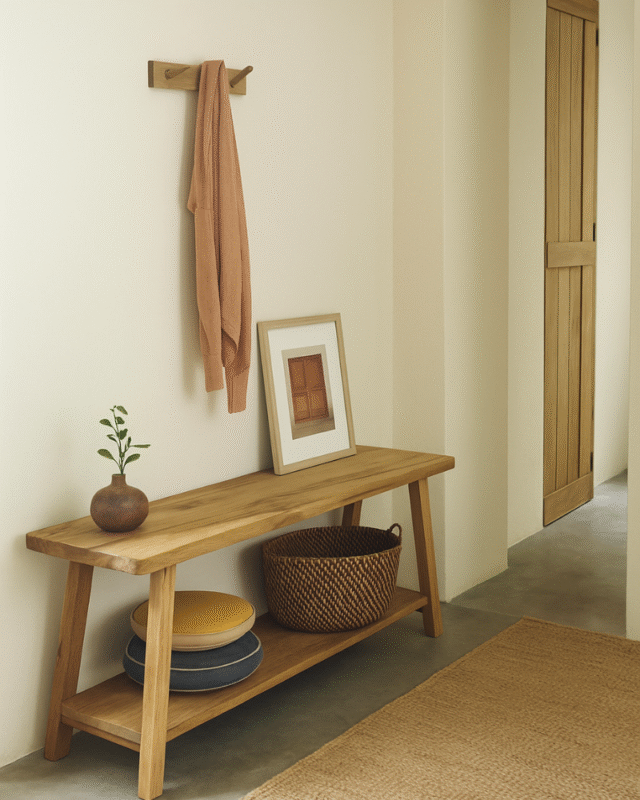
A clutter-free space doesn’t just look better, it feels better. It makes coming home a peaceful experience rather than a stressful one. That’s the true essence of cozy: calm, comfort, and clarity.
Your entryway is more than just a transitional space—it’s your home’s first impression and your personal welcome mat. With these 15 cozy, minimalist design ideas, you can turn even the smallest entry into a serene, stylish, and deeply functional part of your home.
